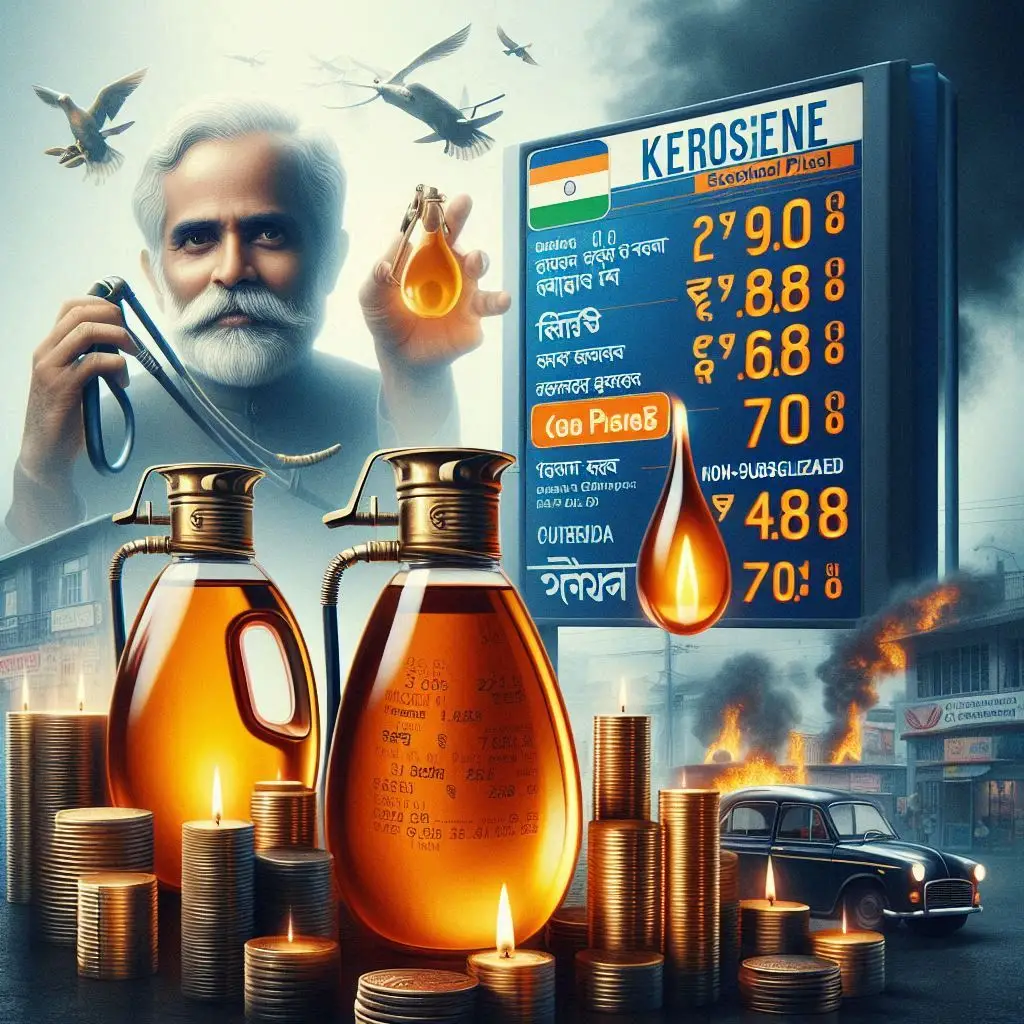
Kerosene oil price in Kolkata today
As far as I know, the price of kerosene in Kolkata varies depending on whether it is subsidized or non-subsidized. The current price for subsidized kerosene is ₹29.00 per liter, while non-subsidized kerosene is priced at ₹70.68 per liter (May 26th, 2024) . These prices reflect the latest updates and are influenced by several factors, including global oil prices, domestic policy decisions, and supply chain dynamics.
The price of kerosene in Kolkata today stands at ₹29.00 per liter for subsidized kerosene and ₹70.68 per liter for non-subsidized kerosene. These prices are shaped by a combination of global market conditions, government subsidies, and local supply dynamics. Understanding these factors helps consumers and policymakers anticipate future trends and make informed decisions.
Maintaining affordable prices for subsidized kerosene is crucial for supporting low-income households, while non-subsidized kerosene prices must be monitored closely to manage industrial and commercial costs. As the energy market evolves, continuous assessment and adaptive policies will be essential to balance affordability and economic sustainability.
Overview of Kerosene Pricing
Subsidized Kerosene
Subsidized kerosene is typically provided to low-income households for cooking and lighting, and sold through the Public Distribution System (PDS). This subsidy aims to make essential fuel affordable for economically weaker sections. The current price of ₹29.00 per liter has remained stable, reflecting government efforts to control inflation and support low-income households
Non-Subsidized Kerosene
Non-subsidized kerosene, used for industrial purposes and by consumers who do not qualify for the subsidy, is significantly higher in price. At ₹70.68 per liter, this price is subject to market fluctuations and lacks the government support that subsidized kerosene enjoys. This segment is more sensitive to changes in crude oil prices and international market trends.
Historical Trends and Price Changes
Over the past year, the price of non-subsidized kerosene has seen considerable fluctuations. For instance, in December 2023, the price was ₹77.07 per liter, which then decreased to ₹68.48 by May 2024. This reduction mirrors a broader trend of declining oil prices and adjustments in domestic pricing policies (.
For subsidized kerosene, the price has been more stable due to government controls. Historical data shows that prices have ranged from ₹24.17 to ₹29.00 over the last year, with minimal changes aimed at maintaining affordability
Factors Influencing Kerosene Prices
Global Crude Oil Prices: Fluctuations in the international crude oil market directly impact the cost of kerosene. Any increase in crude oil prices tends to raise the price of non-subsidized kerosene.
Government Policies: Subsidies and tax policies significantly affect kerosene prices. The Indian government periodically adjusts these to manage economic stability and support vulnerable populations.
Supply Chain Dynamics: Logistics, transportation costs, and regional supply issues can cause variations in kerosene prices across different states and cities.
Detailed Analysis and Implications of Kerosene Pricing
Kerosene pricing in Kolkata, as in other parts of India, is a complex issue influenced by various economic and policy factors. The differential pricing for subsidized and non-subsidized kerosene reflects the government's strategy to balance economic support for vulnerable populations while allowing market forces to determine industrial fuel costs.
Economic Implications
Subsidy Impact: The subsidized kerosene price of ₹29.00 per liter is a deliberate government intervention aimed at reducing the financial burden on low-income households. These subsidies are critical in rural and semi-urban areas where kerosene is a primary source of fuel for cooking and lighting. By keeping prices low, the government ensures that basic energy needs are met without straining household budgets.
Market Dynamics for Non-Subsidized Kerosene: The higher price of ₹70.68 per liter for non-subsidized kerosene reflects global oil price trends and domestic economic policies. This segment of the market is exposed to fluctuations in crude oil prices, currency exchange rates, and international trade policies. For businesses and industries relying on kerosene, these price variations can significantly impact operating costs and pricing strategies.
Policy Considerations
Balancing Subsidies and Fiscal Health: While subsidies play a vital role in social welfare, they also represent a significant expenditure for the government. Balancing the extent of these subsidies with fiscal health is a constant challenge. The government must ensure that subsidies are targeted effectively to those in need while avoiding excessive strain on public finances.
Environmental Impact: Kerosene, being a fossil fuel, contributes to environmental pollution. There is an ongoing policy discussion about gradually reducing dependence on kerosene and transitioning to cleaner energy sources. However, this transition must be managed carefully to avoid adverse economic impacts on low-income populations who currently rely on kerosene.
Future Trends
Price Forecasts: Market analysts predict that the price of non-subsidized kerosene may fluctuate around the current levels in the short term, influenced by global oil market conditions and domestic economic policies. For subsidized kerosene, the prices are expected to remain stable, barring any major policy shifts.
Alternative Energy Sources: There is a growing emphasis on promoting alternative energy sources such as LPG, solar energy, and electricity for cooking and lighting. The Pradhan Mantri Ujjwala Yojana (PMUY), for instance, aims to provide LPG connections to rural households, reducing the reliance on kerosene. This initiative not only addresses energy needs but also aims to improve air quality and health outcomes .
Conclusion
Kerosene pricing in Kolkata exemplifies the broader economic and policy challenges of balancing affordability, fiscal responsibility, and environmental sustainability. The current prices reflect a strategic approach to support low-income households while allowing market dynamics to govern industrial fuel costs. Looking forward, the emphasis on alternative energy sources and efficient subsidy targeting will be crucial in ensuring a sustainable energy future.

